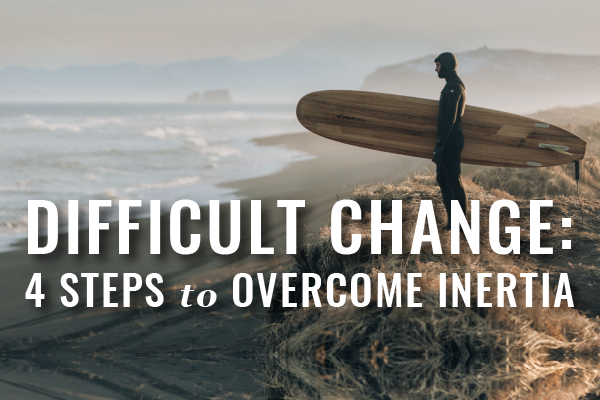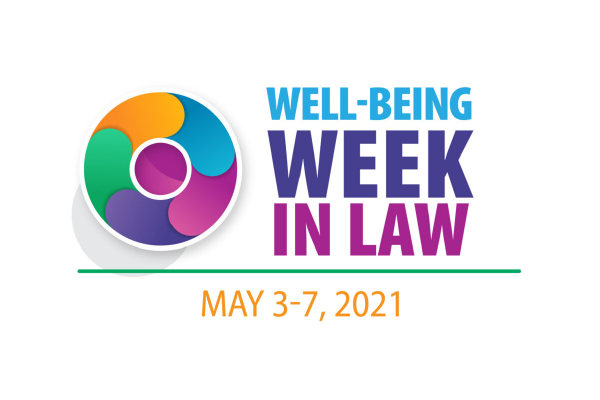Get the 4-step process your brain needs to move through inertia and make the change you want in your professional or personal life as a lawyer.
. . .
A post on LCL MA’s Well-Being Blog redirects here to our Mass LOMAP Blog. Click here to return to LCLMA.
. . .
Once the calendar hits November, we can see the new year around the corner — along with its associate, the resolutions. Many of us choose to set goals to get healthy, get organized, be less stressed, spend more time with family, find a new job, get more clients, or regain your footing after a significant disruption from a merger, acquisition, dissolution or slump in work. And then many of us completely forget them by February 1st because we’re trying to leverage mythical motivation instead of expanding our own capacity to create change.
Do you want 2019 to be different? Do you want to implement the changes that really matter to you? Learn to understand the common challenges that people face when attempting to change ingrained habits and how you can overcome them.
THE CHANGE EQUATION
The change equation is a formula to explain the difficulties faced by people who attempt to make intentional change happen. It was developed in Boston by Richard Beckhard, a pioneer in organization development. Beckhard, an adjunct professor at MIT, and a colleague, R. Harris, explained why it’s so easy to make resolutions and why resistance makes it so difficult to keep them.
The formula is: Dissatisfaction x Vision x First Steps > Resistance. We don’t like the way change feels, so we Resist it. The familiarity of the status quo feels more comfortable and safe. We don’t move out of our zone of safety without enough force to overcome the inertia.
Significant force to change an ingrained habit comes from an extremely high level of Dissatisfaction with one’s present situation, a clear and detailed Vision of a future that is different and better, and clear understanding and ability to take the First Steps to begin changing the way the person thinks, what the person does, and ultimately how the person feels emotionally and physically.
The pernicious features of Resistance include an absence of time or energy, fear of failure, denial, confusion, and even physically not feeling well enough to do what is necessary.
This formula forces us to think about our motivation to overcome resistance when change is difficult, contrary to what we are comfortable doing, and often requires a new way of thinking and a new set of skills. If the discomfort with your present situation isn’t significantly greater than your discomfort with change, it is not likely that you will envision a different and better future or create a strategic action to plan to reach that goal, let alone select a first step to take.
STEP 1: MAKE THE DISCOMFORT REAL.
Asking yourself the right questions may be enough to increase your discomfort. As you add more detail to the picture of your current problematic reality, your discomfort will rise. Questions to consider are:
- What will happen if you continue on this same course without making any changes?
- Why does that matter to you?
- How do you feel about your current situation?
- What opportunities are you missing as a result of your current situation?
Create a written record about your uncomfortable reality. It doesn’t need to be perfect. A written record allows you to add more detail tomorrow without forgetting what you wrote down today. The more detail you add, the more insight you will gain into possible approaches to change it and the more motivation you will feel to act. And words have a uniquely powerful effect on our human brains.
STEP 2: CREATE A DETAILED VISION OF A BETTER FUTURE.
You need a clear description of what you want. That description is your vision statement: the expression of your desire, goal and solution to today’s problems. Your description will influence what you will do. You’ll use it to successfully navigate your path forward.
It’s common to struggle to identify or explain what you want in any detail. If this sounds familiar, give yourself permission and time to think, dream and imagine a different and better future. If you are still stuck, it’s time to wander to new places, expose yourself to new ideas, and go out and meet new people. Shake up your routines — where you go, how you get there, and what you read, watch or listen to. And be present in these new places so you observe what you need for inspiration.
The more detail you add to your vision, the more insight you will gain into possible avenues to live it. Write out the clear description of your detailed and specific vision — your idea for a future that is different and better than your present situation.
STEP 3: CREATE YOUR PLAN AND CHOOSE YOUR FIRST STEPS.
If you have a clear vision and you are sufficiently uncomfortable and unhappy with the detail of today’s reality, you still need a plan with prioritized action steps to get from where you are today to where you want to be.
Action plans are created by distilling broad, complex concepts into specific, detailed parts so that meaning is clear, specific, concrete and objectively measurable. They are also created by using insights gained from the way you explain your current dissatisfaction and vision for the future. The details in your descriptions are often also insights into ideas to try out.
Many problems do not have obvious solutions because of the uncertainty and ambiguity of today’s world. For example, in business, it’s impossible to enumerate every possible contribution to a problem or risk the business is facing and will face. This makes it impossible to describe a problem or vision with certainty. Our world changes abruptly and significantly with little warning. Under these circumstances, solutions tend to be discovered through insights and experimentation.
Develop your adaptability to account for temporary solutions that will require more work. Good questions to chart a path forward are:
- What has to happen before you reach your vision?
- Are there insights in your descriptions of your present discomfort or vision for the future that suggest options to try?
- What resources (skills, time, money, space and/or technology) do you need to make those things happen and what will you do to acquire them?
The Beckhard Change Equation is a handy tool for providing structure for implementing difficult change, and its real super power is in the emotional strength of each element within the formula.
STEP 4: DEVELOP EMOTIONAL INTELLIGENCE.
Emotions can affect your ability to learn new things, make good decision, and communicate effectively. Some emotions can help move you forward, while others derail or impede your efforts. Use or adjust your emotions to improve your change efforts by improving your emotional intelligence, or EQ.
Ninety percent of high performers have high EQ, according to leadership researchers John Zenger and Joseph Folkman. EQ helps us stay aware of our emotions when they are happening in order to manage them, enabling us to improve our performance and relationships.
Defensive Routines are our reflexive responses, done without thinking, in response to feelings of stress, fear, or shame. Also develop an awareness of situations that trigger strong emotions and how long the feelings persist. When your persistent feelings resulting from certain situations lead to impulsive behaviors, you’re in a “defensive routine,” a term coined by Chris Argyris, a Harvard professor and social scientist like Beckhard.
Develop an awareness of when you are happy, sad, angry, worried or embarrassed, and what you tend to think and do as a result. If you don’t develop sufficient EQ, you can expect your triggers and fallback preferences to interfere with your ability to act strategically and advance toward your goals. Practicing mindful meditation can help.
Find out more on how to slow down your thinking to speed up your progress in this recent post!
CONCLUSION
You can make 2018 different. Make it the year that you keep your resolutions. Make it the year to change when it’s really hard. Make it the year to transform your personal and professional life into the successful and happy one of your dreams.
If you’re committed to making change in your career development, get to work on our (free!) Career Research & Development Workbook Series.
. . .
This post was originally published in the January 8, 2018 issue of Massachusetts Lawyers Weekly as “Changing when change is hard”.




